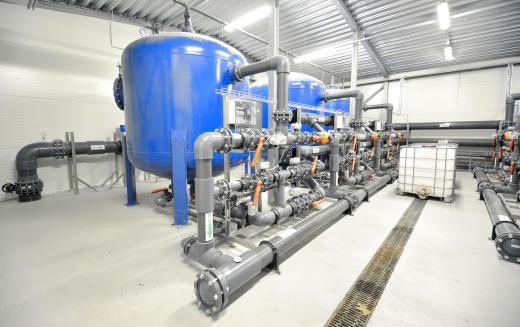A waste heat boiler uses the heat formed as a byproduct of another process, heat which would normally be wasted, and uses it to create steam. The steam can be used to drive turbines which produce electricity. Alternatively, the boiler can simply be used to heat water or other kinds of fluid. As it recycles some of the energy used, a waste heat boiler, or waste heat recovery boiler, can reduce the fossil fuel consumption and financial running costs of a system. This also means fewer greenhouse gases are released into the atmosphere.
Waste heat boiler design comprises two main types: fire-tube boilers, or shell boilers, and water-tube boilers. In fire-tube boilers, a steel shell encloses a water-filled space with metal tubes inside. Hot gases produced from a combustion process, such as inside a furnace, pass back and forth through the tubes transferring heat to the surrounding water.

Fire-tube waste heat boilers have the advantage that they are relatively simple to construct, install and maintain. The heat energy stored in the water can be used to respond to a short-term extra demand, although if all the heat is used there is the disadvantage that it will take a long time to replenish. Another limitation of this kind of equipment is that it cannot operate at the higher pressures a water-tube boiler can.
A waste heat boiler of the water-tube design is able to cope with much higher pressures of steam than a fire-tube boiler, but it is more difficult to construct and install. Inside this type of boiler, there are narrower tubes than inside a fire-tube boiler, and the tubes contain water instead of hot gases. In a reversal of the system inside a fire-tube boiler, waste heat, in the form of hot gases or furnace flames, surrounds the water-filled tubes. Insulating materials are used to protect the boiler tubes against flame damage. As well as tolerating high pressures, a water-tube waste heat boiler can respond quickly to changes in heat input.
Waste heat boilers can be used in what are known as combined heat and power, or CHP, plants. These are power plants where the heat that is normally created as a byproduct of generating electricity is utilized, improving efficiency from around 40 percent to around 70 percent. Maximum efficiency is achieved when the heat is used either on or very near the site of the plant.
